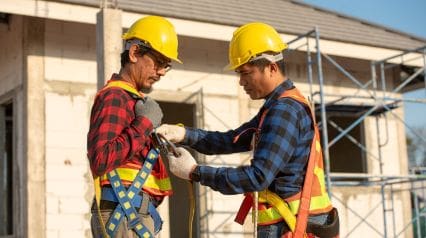Continuous mobile crane safety training plays a critical role in enhancing safety at construction sites by ensuring that crane operators and other personnel stay updated on the latest safety protocols and operational techniques. As construction sites become increasingly complex with the integration of advanced technologies and more sophisticated machinery, the risks associated with mobile crane operations also evolve. Regular safety training helps mitigate these risks by reinforcing safe practices and ensuring compliance with current safety regulations. One of the primary benefits of continuous training is the reinforcement of safe operating procedures. Mobile cranes are intricate machines requiring precise handling to avoid accidents. Operators must be proficient in various tasks such as load calculations, rigging, and maneuvering the crane in various environments. Continuous training helps operators refresh their knowledge, stay sharp, and adapt to any changes in safety standards or operational techniques. This ongoing education reduces the likelihood of human error, which is a significant factor in crane-related incidents.

Moreover, continuous training is crucial for integrating new safety technologies and practices. The construction industry constantly evolves, introducing new equipment and safety innovations. For instance, advancements in crane technology, such as improved load monitoring systems or enhanced stability features, necessitate updated training for operators. By regularly participating in training programs, crane operators can learn how to effectively use these new tools and features, thereby enhancing the overall safety of crane operations. Training also plays a vital role in maintaining regulatory compliance. Safety standards and regulations for crane operations are subject to change, and staying compliant is essential to avoid legal issues and ensure worker safety. Continuous training ensures that operators and site managers are aware of the latest regulatory requirements and best practices. This proactive approach helps prevent violations and fosters a culture of safety on site. Furthermore, continuous training fosters a culture of safety awareness among all personnel involved in crane operations.
It emphasizes the importance of communication and teamwork between crane operators, riggers, and other construction workers. Training programs often include components on hazard recognition, emergency response, and effective communication strategies. These aspects are crucial in preventing accidents and ensuring that everyone on site is prepared to respond swiftly and effectively to any issues that arise. Another significant advantage of ongoing training is its impact on accident prevention and cost reduction. By maintaining a high level of expertise among crane operators and other relevant personnel, the likelihood of accidents decreases. Fewer accidents lead to lower insurance premiums and reduced costs associated with workplace injuries, equipment damage, and project delays and finds more details in about us. Therefore, investing in continuous training not only enhances safety but also proves economically beneficial in the long run. In summary, continuous mobile crane safety training is essential for building safer construction sites. It ensures that operators and personnel are well-versed in current safety practices, integrates new technologies effectively, maintains regulatory compliance, and fosters a safety-conscious culture.
